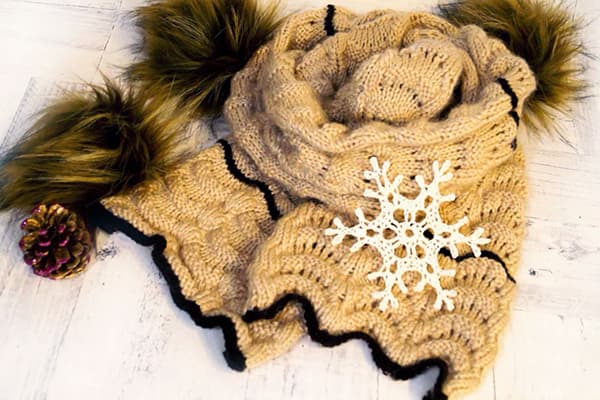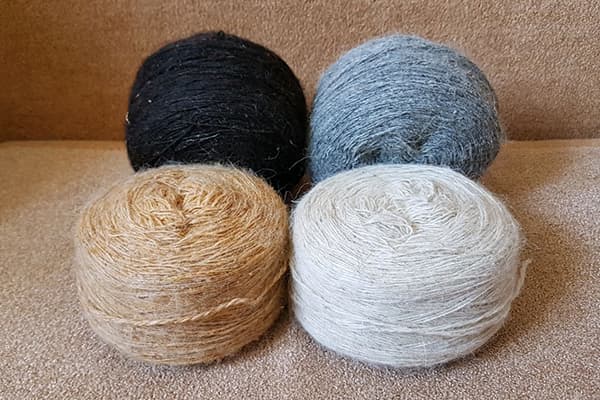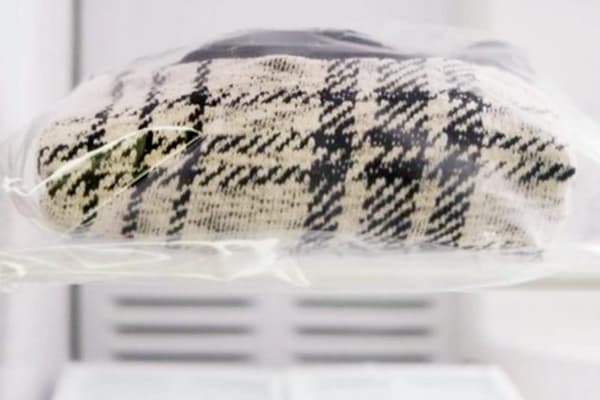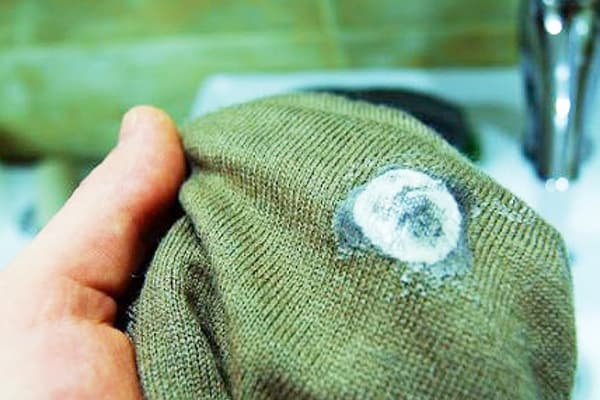Freezing woolen items: how and why is it needed, why does this life hack not work?
Freezing woolen items is not a new trend. Our mothers and grandmothers also tried to make clothes less scratchy in this way. However, in the 21st century there is no longer any reason to consider this method effective and send sweaters to the freezer.

The effect of frost on wool
It is immediately necessary to emphasize that from the point of view of physics, influencing the sharpness of woolen threads with the help of frost is a very real and feasible task. However, the effect of this procedure will not be as expected. To understand why this is so, you need to know what wool actually is.
So, wool is almost the same as human hair. The structure of the hair of humans and animals is almost the same:
- Core (i.e. inner) layer - These are cells filled with air.
- Cortex (cortical layer) - forms the body of the hair. The cortex determines what kind of hair it will be - porous or dense, fine or coarse, light or dark.
- Scaly (outer) layer - as the name implies, it consists of many tiny scales. The more closely they adhere to each other, the smoother and shinier the hair. If the scales “puff up”, the hair will be hard, unpleasant to the touch, and will begin to fall off.
However, not all hair (fur) looks the same. Depending on the ratio in which the above-mentioned components are present, hair can be of four types:
- Pooh. It is very soft and does not itch at all.It does not have a core layer.
- Transitional hair. Feels harder than down and feels thicker. It has a core layer, but not everywhere, but only in places. There are practically no prickly ones.
- Ost. Coarse and hard hair with a thick core layer. Threads made from it are noticeably prickly.
- Dead hair. Very thick, brittle, has a rough structure. The core layer occupies more than half of its diameter. If such wool was used when spinning threads, the product will be very uncomfortable to wear.
Now let's move on to the main question - how does frost affect wool? And the answer will be simple: as long as it’s dry, no way. This can be confirmed, for example, by polar polar bears - their fur coats can easily withstand temperatures down to -50°C and below.
The situation is completely different with wet wool. When moisture penetrates the hair, it fills the space between the scaly layer and the cortex, and is also partially absorbed into the cortex. Then, under the influence of cold, the water expands (this property is known to everyone who skipped physics at school or tried to freeze water in bottles filled to the very neck). When water expands, the structure of the hair is disrupted - in other words, the hair “bursts at the seams.” Of course, it won’t break the first time, but if getting wet followed by freezing is repeated several times, then breaks cannot be avoided.
As we found out earlier, the hardest and roughest types of hair are the most prickly. Simply because their ends, which come out of the thread, do not have sufficient plasticity to change the trajectory of movement upon contact with human skin. They dig into the skin, causing discomfort.What happens to such hairs after being frozen wet, and even repeatedly? That's right, they will break, which means there will be even more sharp ends. Accordingly, the thing will prick even more.
How and where to freeze wool items?
If, after the above facts, the reader still intends to subject his sweater or scarf to the test of low temperatures, he will have only three options:
- Place the item in liquid nitrogen. In the conditions of an ordinary apartment or house, this is hardly possible, but employees of some laboratories may well use a similar method.
- Take the item out onto the balcony. To do this, you will have to wait until winter with bitter frosts.
- Place the item in the freezer. An ordinary household refrigerator can provide from -18 to -25°C at any time of the year and in any climate.
The inventors of the freezing life hack insist that before sending woolen fabric or threads into the realm of sub-zero temperatures, they need to be soaked in water. Therefore, there is a risk that a wet item will freeze to the walls of the freezer, bags of dumplings or a container with borscht stored for future use. To prevent this from happening, it will have to be placed in a plastic bag.
After the item turns into an ice briquette, it is taken out, defrosted in a basin and washed as usual.
What things can be frozen?
You can freeze any things that absorb water and whose dimensions allow them to be placed where the temperature is below zero. But, keeping in mind that freezing woolen items does not relieve them of their harshness, let’s try to find at least some practical meaning of this procedure.
And there is such a meaning. It appears when chewing gum was accidentally or pretended to be glued to a wool product.No one has yet been able to scrape it off so that there is no trace left on the fabric or threads. But under the influence of frost, it, being nothing more than a piece of rubber, becomes hard and then cracks. So freezing is a great way to remove gum from a sweater, hat, scarf, dress, or even coat. The only caveat is that you don’t need to wet your clothes before placing them in the freezer.
Pros and cons of the procedure
There are no pronounced advantages or disadvantages to freezing wool items. After exposure to the cold, clothing will not stretch or shrink in size, will not tear, and will not become bulletproof. And even more so, such a property as prickliness will not disappear.
Some people claim that freezing did help them make things less prickly. Whether to trust such reviews or not is up to everyone to decide for themselves, but there is no scientific evidence for this, except, perhaps, the tendency of the human psyche to self-hypnosis.
Since freezing does not solve the problem of causticity, in conclusion we’ll talk about how to make clothes more comfortable to wear. To soften the hairs and make them more flexible, the same products that are used for human hair are suitable - for example, you can wash a sweater or scarf with shampoo for dry hair, or after washing with regular powder, rinse the item in water with the addition of balm for curly hair. If you have a lot of woolen clothes, you should purchase special gel and conditioner for washing such items - they are suitable for use in the washing machine.




We froze woolen items from moths - 100% guarantee.
For moths, linen mites and bedbugs, you need to keep the item in the freezer for at least 4 days.
Bacteria and fungi die when exposed to very high or extremely low temperatures. In the warm environment that is created during washing in a washing machine, they, on the contrary, begin to multiply.
To get rid of the unpleasant smell of old clothes and pathogens, you should keep washed and dry clothes in the freezer for several hours. The item is carefully rolled up, placed in a clean bag and placed in the refrigerator.
I've never even heard of woolen items being frozen. I'll have to try it.